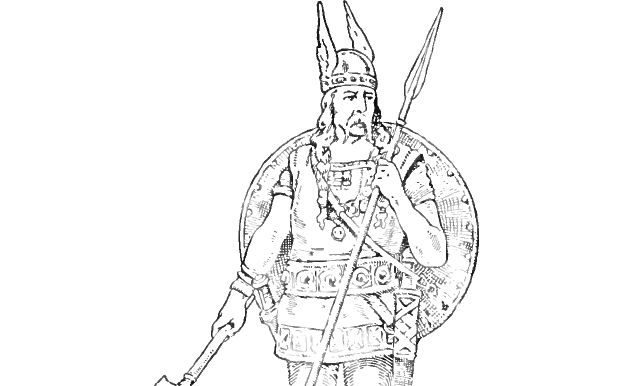<![CDATA[A ring-shaped Viking fortress has been discovered by Danish archaeologists on the island of Zealand, just 30 miles south of Copenhagen. This fortress is the fifth of its kind to be discovered, but the first in over 60 years. The discovery was made by a team led by Nanna Holm, curator of The Danish Castle Centre. She made the discovery after performing a survey of the landscape by laser scanning. The hidden circular fortress is 475 ft (145 meters) in diameter. Even though Viking fortresses can be found throughout Europe, these circular ones are unique to Denmark and Sweden. They are a rare discovery, and archaeologists thought that there weren't many of them left to find. The ring-shaped fortresses are called Trelleborgs, they were built in a circular shape with a rampart and four massive gates akin to the four corners of a compass. The majority of Trelleborgs - including the one recently discovered - were built by Harald Bluetooth, a king of Denmark who died in 986 AD. Denmark and Norway became Christian countries under his leadership, and some believe that the design of these fortresses was inspired by old Roman army camps. Excavation has not been completed as yet, but so far two gates have been discovered. Even though King Harald is a likely candidate to have built this fortress, some experts believe that they were also built by his son, Sweyn Forkbeard, the first Danish king of England. He took the throne on Christmas Day 1013 after capturing London. Forkbeard may have used these fortresses as military training camps or barracks from which to launch attacks on England. Based on prior studies, Dr. Holm and her team had a hunch that a fortress would be found on Zealand Island. They realized that the location of the island was a good setting for such a fortress, as it was a place where main roads intersected and met the Koge River Valley, a navigable fjord and natural harbour. Dr. Holm believes that the fortress hosted a large battle, as the team found massive charred oak posts at the north gate. The charred wood samples were sent to a lab to be carbon dated, but the team are already almost positive that the fortress is from the Viking Age. The discovery will help explain the island of Zealand's role in Viking history. Large castles were often situated inside Trelleborgs, and Holm and her team hope to find evidence of one in this fortress. The fortress' exact location was found with the help of a geophysics archaeologist from the University of York named Helen Goodchild. She found different features in the ground by measuring small variations in the earth's magnetic field. An image was reproduced, giving the archaeologists an idea of where to put their excavation trenches. The archaeologists hope to discover even more of these Viking fortresses in the future. ]]>
Historians Find Viking "Ring Fortress" in Denmark
